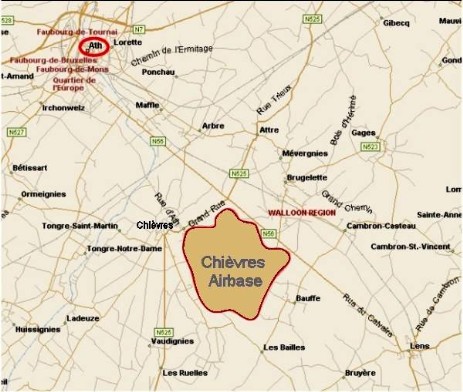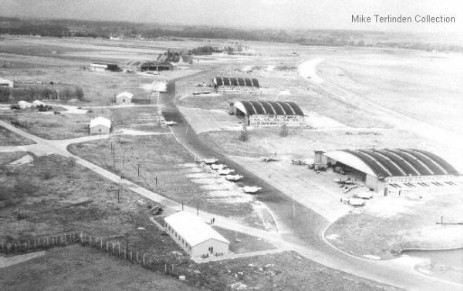La base di Chièvres - Myouth - Ricordi degli anni '70
Menu principale:
La base di Chièvres
Modellismo > Aerei > Messerschmitt Bf109-E
Aeroporto di St. Omer-Arques
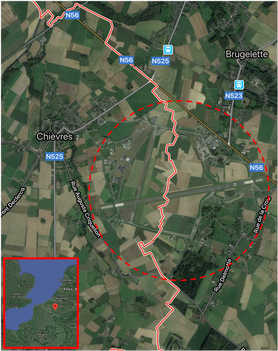
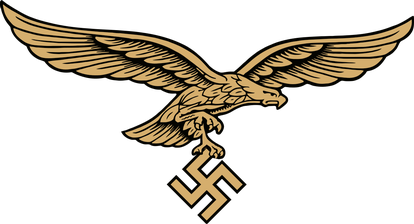
Emblema della Luftwaffe
Emblem of Luftwaffe
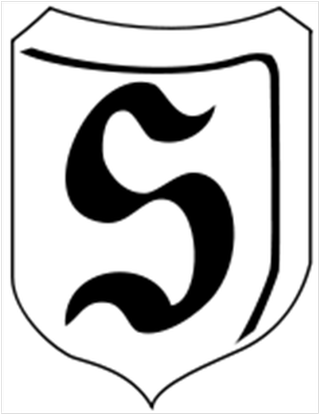
L'emblema dello Jagdgeschwader 26 (JG 26 - 26º stormo caccia)
Emblem of Jagdgeschwader 53 (JG 26)
Chièvres Air Base (Belgium)
Coordinates: 50°34′33″N 003°49′52″E
Chièvres Air Base (ICAO: EBCV) is a United States Air Force operated airfield located 1 nautical mile (1.9 km; 1.2 mi) east southeast
History
The first airfield at Chièvres was established in 1914 by the Germans during their occupation of Belgium in World War I.
The current airfield was built by the Belgian Army in the 1930s, and at the end of 1939, the Belgian military began converting Chièvres into a diversion airfield. It was captured during the Battle of Belgium by the invading German Wehrmacht in May 1940.
German use during World War II[
Shortly after its capture, the airfield was turned over to the Luftwaffe, and Chièvres became a major air base during the Battle of France. On 2 June, Jagdgeschwader 26 (JG 26) moved Messerschmitt Bf 109E fighters to the airfield and on 9 June Kampfgeschwader 30 (KG 30) moved Junkers Ju 88A attack bombers to the field. Both of these units were heavily engaged in combat operations with the French and the British Expeditionary Force in France.
KG 26 moved into France within a few days, while KG 30 remained at Chièvres until September, taking part in the Battle of Britain. In addition to the Luftwaffe, the Corpo Aereo Italiano stationed Fiat BR.20M Cigogna (43° Stormo) and Cant Z.1007bis bombers (172° Squadriglia Ricognizione Strategica Terrestre) at the base on 27 September, also taking part in the Battle of Britain. The Italians received heavy casualties, and by December 1940 they were recalled to Italy.
By late 1940 Chièvres had been taken off operational status by the Luftwaffe. The Germans found the airfield construction work incomplete, and began rebuilding and expanding the airfield. Construction began and two 1,800 m (5,900 ft) length concrete runways were laid down, extensive taxiways and dispersal pads, and a support facility consisting of maintenance shops, barracks, warehouses and hangars.
The base became operational again in March 1941 when a bomber unit, Kampfgeschwader 3 (KG 3) arrived from Le Culot Airfield (Beauvechain Air Base), withDornier Do 17 light bombers. From Chièvres KG 3 flew raids against Britain and anti-shipping missions in support of the U-Boats during the Battle of the Atlantic campaign. It later transitioned to Junkers Ju 88A attack bombers, and in February 1942 IV.(Erg)./KG 3 assisted the German warships Scharnhorst and Gneisenau in the famous "Channel Dash". In January 1943, it moved to Istres Air Base in Southern France, to attack Allied shipping in the Mediterranean.
Luftwaffe operational units returned to Chièvres during the summer of 1944 when a series of Junkers Ju 88 units, Kampfgeschwader 6 (KG 6); Kampfgeschwader 30 (KG 30), and Kampfgeschwader 76 (KG 76) arrived in June and July. The units attacked targets in England, and later against Allied shipping in the English Channel after the Normandy Invasion of France. The base also served as a diversion field for Luftwaffe fighters.
In August, the base became a base for day interceptors against the American Eighth Air Force bomber fleets attacking targets in Occupied Europe and Germany. As part of the "Defense of the Reich" campaign, Messerschmitt Bf 109s of Jagdgeschwader 26 (JG 26) attacked the heavy bombers. Later in August, Kampfgeschwader 51 (KG 51) arrived with the Messerschmitt Me 262A jet interceptor for a few days before departing.
Chièvres Air Base was a frequent target of USAAF Ninth Air Force B-26 Marauder medium bombers. The medium bombers would attack in coordinated raids, usually in the mid to late afternoon, with Eighth Air Force heavy bombers returning from attacking their targets in Germany. The attack was timed to have the maximum effect possible to keep the Luftwaffe interceptors pinned down on the ground and be unable to attack the heavy bombers. Also, the P-47 Thunderbolts of Ninth Air Force would be dispatched to perform fighter sweeps over Chièvres after the Marauder raids, then meet up with the heavy bombers and provide fighter escort back to England. As the P-51 Mustang groups of Eighth Air Force began accompanying the heavy bombers all the way to their German targets by mid-1944, it was routine for them to also attack Chièvres on their return to England with a fighter sweep and attack any target of opportunity to be found at the airfield.
The Luftwaffe was forced to withdraw from the base by September 1, 1944, leaving the installation heavily damaged.
Credits: Wikipedia
Home Page | Modellismo | Topolini | Altri Disney | Linus | Asterix | Diabolik | Giornalini di guerra | Western | Riviste | Romanzi | Mappa generale del sito
